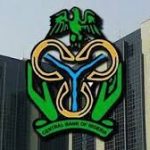The sharp rise in banks’ deposits with the Central Bank of Nigeria (CBN) this year has highlighted significant excess liquidity in the country’s financial system. Data from the apex bank show that commercial banks deposited a total of N53.5 trillion with the CBN in the first five months of 2025 (5M’25), marking a massive year-on-year increase of 1,578 percent compared to N3.19 trillion recorded in the same period of 2024 (5M’24).
These deposits were made through the CBN’s Standing Deposit Facility (SDF), where banks earn interest at a rate of 100 basis points below the Monetary Policy Rate (MPR), currently set at 27.5 percent. This means banks earn 26.5 percent on idle funds parked with the CBN—an attractive rate that has encouraged increased placements under the SDF.
In the first quarter of 2025 alone (Q1’25), banks placed N19.22 trillion with the apex bank, a dramatic 956 percent rise from N1.82 trillion in Q1’24. The trend continued into April, with SDF deposits rising by 3,793 percent year-on-year to N16.75 trillion, up from N428.98 billion in April 2024. In May, deposits grew further by 1,761 percent to N17.55 trillion, compared to N943.1 billion recorded a year earlier.
This surge in deposits has coincided with a shift in the CBN’s interest rate policy introduced last year, which unified the remuneration structure for the SDF. Under the new single-tier structure, all SDF placements earn the same rate of MPR minus 100 basis points. The change has provided a strong incentive for banks to place excess funds with the apex bank rather than lend to the real sector.
On the lending side, the CBN offers short-term funding to banks through the Standing Lending Facility (SLF) and repurchase agreements (Repo). Funds lent through the SLF attract a rate of 500 basis points above the MPR.
In the five months to May 2025, banks’ borrowings from the CBN via the SLF rose slightly by 6.8 percent year-on-year to N57.98 trillion, up from N54.29 trillion in the same period of 2024. In the first quarter alone, SLF borrowings climbed by 61 percent to N50.46 trillion, from N31.25 trillion in Q1’24.
However, a sharp drop occurred in subsequent months. In April 2025, borrowings fell to N4.5 trillion—a 170 percent decline from N12.17 trillion in April 2024. The downward trend continued in May 2025, with borrowing falling 81 percent year-on-year to N2.02 trillion from N10.87 trillion.
The data paints a clear picture: Nigerian banks are flush with liquidity, choosing to deposit excess funds with the CBN at attractive rates rather than lending or borrowing. Analysts believe this development, while reflecting tighter monetary conditions, also signals cautious lending behavior in an uncertain economic environment.










